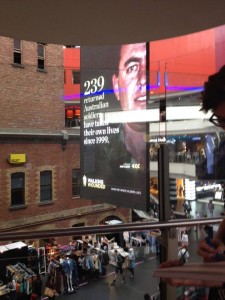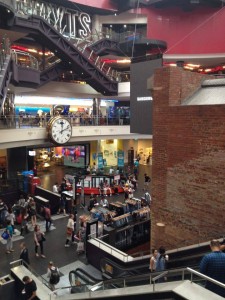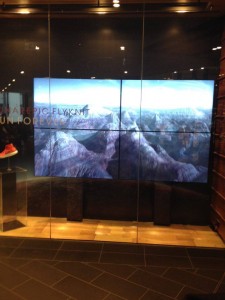I’m quite satisfied with the result of both my group’s audio and video essay. I thought my group had a reasonably clear understanding of our topics, and the way in which we presented each topic was compelling enough for us all to be proud of our efforts.
The most successful aspect of the essay was how committed we all were to the ‘angle’. For the audio essay, we all shared the same opinion that trigger warnings are ridiculous. This allowed our meetings to be used as a forum for free and open discussion, as we are all naturally anti-censorship. For the video essay, after agreeing on our subject, we found The Interview to be a unique case study (cyber-terrorism, diplomatic relationships, culture and consumption) and since it was a relatively new film, there was plenty of content to research. As a result, we became more devoted to both of our topics, and the research process felt more interesting rather than a chore.
The main issue was the outcome of the edited video essay. We agreed that I would edit the audio essay, and that Lydia would edit the video essay. I’m very pleased with how I edited the audio essay, but I’m not sure the video essay came out how we wanted. It’s understandable; creating a video essay is much more difficult than an audio essay as there are more things to consider. While I found the information we presented to support our angle in the video essay to be compelling, the way in which it was presented could have been cleaner.
After delving into textual analysis through lectures, workshops and further research, I particularly was very interested in idea of “the sense-making processes that take place in the relationship between producers and audiences as mediated through media texts”. I saw trigger warnings as a good example for this due to the fact it is a recent phenomena, it involves education, and that it was primarily about a disconnect between media producers and audiences. For the video essay, Robert McKhee’s ‘Substance Of Story’ introduced the idea of how “the protagonist must be empathetic; he may or may not be sympathetic”. I saw The Interview as a case study of how culture can determine if a character is seen as “empathetic” and/or “sympathetic” in the context of a film. I feel we explored this idea quite thoroughly in our finished product.
Creating both an audio and video essay made me consider the ways in which you can present information through two different mediums. Audio essays are more about telling; sound is the only thing that can be used. When editing, I had to come up with a structure that wouldn’t bore the listener in that particular format. This is why I used different types of sound (music, sound effects and clips that were relevant to our topic) to make the essay a bit more dynamic. The video essay, however, was more about showing. While we used narration to focus on key points, we relied on found footage to provide the basis for our discussion.
During the making process, the main lesson I learned about collaboration was how essential it is to be organised. Despite assigning roles and creating deadlines for certain tasks, I think our group could have been even more organised. There were plenty of occasions where work was completed, but we were still unsure if it was the actual information we were trying to communicate. I think we probably could have had another session per week to discuss the actual idea behind each essay in greater depth, because a clear understanding results in a more developed product. As an aspiring media practitioner, you have to know what you are truly trying to convey. When you are in a group, it’s about having the team share that principle.
Overall, Project Brief 4 was quite fun. I gained a clear understanding of two topics, I thought hard about how to communicate these ideas through two different mediums, and I experienced what it is like to work within a team.








